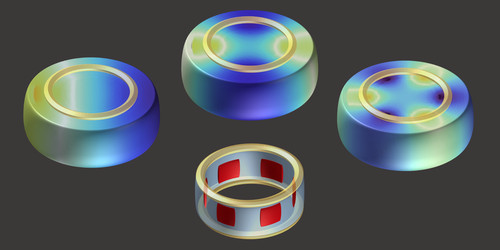One Ring to Measure Blood-Glucose Level
Continuous and accurate monitoring of glucose levels in the bloodstream is crucial in effectively managing health conditions such as diabetes. Direct methods for measuring blood-glucose levels are invasive, requiring someone to puncture their skin to obtain a blood sample. Noninvasive alternatives exist but only measure blood-glucose levels indirectly using tears or sweat, for example, resulting in delayed results that have low accuracy. Now Hoyeong Kwon at the Center for Advanced Meta-Materials, South Korea, and Andrea Alù at the City University of New York have proposed a ring-shaped device that could noninvasively, directly measure blood-glucose levels with a high-enough accuracy to be clinically useful [1]. This advance adds to the capabilities of existing ring devices, which can currently measure health parameters such as blood pressure and heart rate.
The ring device of Kwon and Alù is designed to be placed on a finger, and it sends radio-frequency electromagnetic waves through the skin. The ring contains detectors along with amplifiers that boost the field’s intensity. Numerical simulations of the fields after they have passed through a finger revealed significant scattering of the field for a narrow range of frequencies. The frequency of the peak intensity of this scattering band (a resonance) correlates with the concentration of glucose in the blood.
The results show that this resonance frequency is linearly proportional to the blood-glucose level for concentrations between 0 and 400 milligrams per deciliter (mg/dL) and that the ring design should be sensitive to glucose concentration changes as small as 10 mg/dL. Therefore, measurements of the resonance frequency provide a high degree of sensitivity. According to the World Health Organization, a normal blood-glucose concentration after fasting, for example, in the morning before breakfast, lies between 70 and 100 mg/dL. Thus, the device has the potential to offer meaningful and timely feedback to the user, the researchers say.
–Martin Rodriguez-Vega
Martin Rodriguez-Vega is an Associate Editor for Physical Review Letters.
References
- H. Kwon and A. Alù, “Active Mie-like resonance for noninvasive glucose detection,” Phys. Rev. Applied 21, 034060 (2024).




